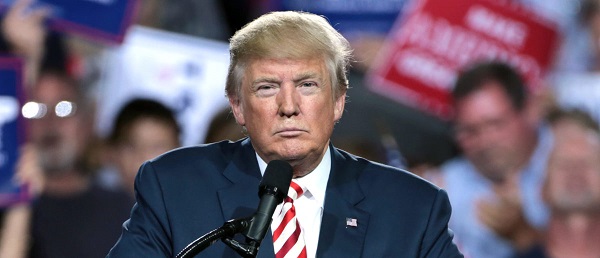Alberta
Nominations open for Alberta’s most prestigious (and lucrative) arts award(s)

Alberta has amazing artists! If you know someone deserving, then don’t let this chance get away on you. Nominations are now open for the 2019 Lieutenant Governor of Alberta Distinguished Artist Awards. These are Alberta’s most prestigious artistic award, and 3 recipients will each receive a $30,000 cash prize.
Alberta artists (from all disciplines) and those now working elsewhere, but maintaining a strong connection to Alberta, are eligible and anyone may nominate through a simple online process, see link below.
Here is a list of Distinguished Artists already awarded: John Estacio (music – composer); Alice Major (literary arts); Alex Janvier (visual arts); Frances Ginzer (music); Ronnie Burkett (theatre arts); Peter von Tiesenhausen (visual arts); Old Trout Puppet Workshop (theatre arts); Aritha van Herk (literary arts); Robert Kroetsch (literary arts); Jane Ash Poitras (visual arts); Joan Stebbins (visual arts – curator); Rudy Wiebe (literary arts); Greg Hollingshead (literary arts); One Yellow Rabbit (theatre arts); Isobel and Tom Rolston (music); Douglas Cardinal (architecture); John Murrell (theatre arts – playwright).
The 2019 recipients will receive their $30,000 awards from the award’s patron, the Lieutenant Governor of the Province of Alberta, at a celebration in Maskwacis, Alberta on Saturday, September 21, 2019.
The nomination process closes midnight, March 31, 2019. Click here to nominate someone.
Nominations for the 2019 Lieutenant Governor of Alberta Distinguished Artist Awards can be submitted on-line until March 31, 2019.
To prepare for the nomination:
* Ensure the nominee is a Canadian citizen, lives in Alberta, or has had a significant connection to Alberta over time.
* Speak to your nominee, let them know you will be nominating them, ask for a current CV and their complete contact information.
* Write a document of no more than three pages, single spaced, explaining why this nominee merits Alberta’s top recognition for artistic achievement. Include highlights of the nominee’s artistic achievements and/or their contribution to advancing their artistic discipline. If the nominee does not currently reside in Alberta, clearly outline their connection to Alberta and their contribution to growing our province’s arts and culture.
Fill out the contact information online and upload the nomination and CV documents.
About the Awards: The Lieutenant Governor of Alberta Arts Awards Foundation was established in 2003 to celebrate excellence in the arts and to underline the importance of the arts in Alberta. The Foundation administers two programs of awards to Alberta artists.
The Distinguished Artist Awards program gives up to three awards of $30,000 each in recognition of outstanding achievement in the arts by Albertans or significant contribution to the arts in Alberta.
The Emerging Artist Awards program gives up to ten awards of $10,000 each to support and encourage promising artists early in their careers, who have created a modest body of work, and are recognized by established artists in the same field of artistic endeavour as having potential to achieve excellence in their discipline.
The Awards Programs of the Foundation were established under the founding patronage of The Late Honourable Dr. Lois E. Hole, C.M., A.O.E., Lieutenant Governor of Alberta from 2000 – 2005, and continue under the patronage of His Honour Col. (Ret’d) the Honourable Donald S. Ethell, OC, OMM, AOE, MSC, CD, Lieutenant Governor of Alberta.
Alberta
Housing in Calgary and Edmonton remains expensive but more affordable than other cities

From the Fraser Institute
By Tegan Hill and Austin Thompson
In cities across the country, modest homes have become unaffordable for typical families. Calgary and Edmonton have not been immune to this trend, but they’ve weathered it better than most—largely by making it easier to build homes.
Specifically, faster permit approvals, lower municipal fees and fewer restrictions on homebuilders have helped both cities maintain an affordability edge in an era of runaway prices. To preserve that edge, they must stick with—and strengthen—their pro-growth approach.
First, the bad news. Buying a home remains a formidable challenge for many families in Calgary and Edmonton.
For example, in 2023 (the latest year of available data), a typical family earning the local median after-tax income—$73,420 in Calgary and $70,650 in Edmonton—had to save the equivalent of 17.5 months of income in Calgary ($107,300) or 12.5 months in Edmonton ($73,820) for a 20 per cent down payment on a typical home (single-detached house, semi-detached unit or condominium).
Even after managing such a substantial down payment, the financial strain would continue. Mortgage payments on the remaining 80 per cent of the home’s price would have required a large—and financially risky—share of the family’s after-tax income: 45.1 per cent in Calgary (about $2,757 per month) and 32.2 per cent in Edmonton (about $1,897 per month).
Clearly, unless the typical family already owns property or receives help from family, buying a typical home is extremely challenging. And yet, housing in Calgary and Edmonton remains far more affordable than in most other Canadian cities.
In 2023, out of 36 major Canadian cities, Edmonton and Calgary ranked 8th and 14th, respectively, for housing affordability (relative to the median after-tax family income). That’s a marked improvement from a decade earlier in 2014 when Edmonton ranked 20th and Calgary ranked 30th. And from 2014 to 2023, Edmonton was one of only four Canadian cities where median after-tax family income grew faster than the price of a typical home (in Calgary, home prices rose faster than incomes but by much less than in most Canadian cities). As a result, in 2023 typical homes in Edmonton cost about half as much (again, relative to the local median after-tax family income) as in mid-sized cities such as Windsor and Kelowna—and roughly one-third as much as in Toronto and Vancouver.
To be clear, much of Calgary and Edmonton’s improved rank in affordability is due to other cities becoming less and less affordable. Indeed, mortgage payments (as a share of local after-tax median income) also increased since 2014 in both Calgary and Edmonton.
But the relative success of Alberta’s two largest cities shows what’s possible when you prioritize homebuilding. Their approach—lower municipal fees, faster permit approvals and fewer building restrictions—has made it easier to build homes and helped contain costs for homebuyers. In fact, homebuilding has been accelerating in Calgary and Edmonton, in contrast to a sharp contraction in Vancouver and Toronto. That’s a boon to Albertans who’ve been spared the worst excesses of the national housing crisis. It’s also a demographic and economic boost for the province as residents from across Canada move to Alberta to take advantage of the housing market—in stark contrast to the experience of British Columbia and Ontario, which are hemorrhaging residents.
Alberta’s big cities have shown that when governments let homebuilders build, families benefit. To keep that advantage, policymakers in Calgary and Edmonton must stay the course.
Alberta
Danielle Smith slams Skate Canada for stopping events in Alberta over ban on men in women’s sports

From LifeSiteNews
The Alberta premier has denounced Skate Canada as ‘disgraceful’ for refusing to host events in the province because of a ban on ‘transgender’ men in women’s sports.
Alberta Premier Danielle Smith has demanded an apology after Skate Canada refused to continue holding events in Alberta.
In a December 16 post on X, Smith denounced Skate Canada’s recent decision to stop holding competitions in Alberta due to a provincial law keeping gender-confused men from competing in women’s sports.
“Women and girls have the right to play competitive sports in a safe and fair environment against other biological females,” Smith declared. “This view is held by a vast majority of Albertans and Canadians. It is also common sense and common decency.”
Women and girls have the right to play competitive sports in a safe and fair environment against other biological females.
This view is held by a vast majority of Albertans and Canadians. It is also common sense and common decency.
Skate Canada‘s refusal to hold events in… pic.twitter.com/n4vbkTx6B0
— Danielle Smith (@ABDanielleSmith) December 16, 2025
“Skate Canada‘s refusal to hold events in Alberta because we choose to protect women and girls in sport is disgraceful,” she declared.
“We expect they will apologize and adjust their policies once they realize they are not only compromising the fairness and safety of their athletes, but are also offside with the international community, including the International Olympic Committee, which is moving in the same direction as Alberta,” Smith continued.
Earlier this week, Skate Canada announced their decision in a statement to CBC News, saying, “Following a careful assessment of Alberta’s Fairness and Safety in Sport Act, Skate Canada has determined that we are unable to host events in the province while maintaining our national standards for safe and inclusive sport.”
Under Alberta’s Fairness and Safety in Sport Act, passed last December, biological men who claim to be women are prevented from competing in women’s sports.
Notably, Skate Canada’s statement failed to address safety and fairness concerns for women who are forced to compete against stronger, and sometimes violent, male competitors who claim to be women.
Under their 2023 policy, Skate Canada states “skaters in domestic events sanctioned by Skate Canada who identify as trans are able to participate in the gender category in which they identify.”
While Skate Canada maintains that gender-confused men should compete against women, the International Olympic Committee is reportedly moving to ban gender-confused men from women’s Olympic sports.
The move comes after studies have repeatedly revealed what almost everyone already knew was true, namely that males have a considerable innate advantage over women in athletics.
Indeed, a recent study published in Sports Medicine found that a year of “transgender” hormone drugs results in “very modest changes” in the inherent strength advantages of men.
Additionally, male athletes competing in women’s sports are known to be violent, especially toward female athletes who oppose their dominance in women’s sports.
Last August, Albertan male powerlifter “Anne” Andres was suspended for six months after a slew of death threats and harassments against his female competitors.
In February, Andres ranted about why men should be able to compete in women’s competitions, calling for “the Ontario lifter” who opposes this, apparently referring to powerlifter April Hutchinson, to “die painfully.”
Interestingly, while Andres was suspended for six months for issuing death threats, Hutchinson was suspended for two years after publicly condemning him for stealing victories from women and then mocking his female competitors on social media. Her suspension was later reduced to a year.
-

 Business13 hours ago
Business13 hours agoCanada Hits the Brakes on Population
-

 Crime2 hours ago
Crime2 hours agoBrown University shooter dead of apparent self-inflicted gunshot wound
-

 Business2 days ago
Business2 days agoOttawa Pretends To Pivot But Keeps Spending Like Trudeau
-

 International2 days ago
International2 days agoBondi Beach Shows Why Self-Defense Is a Vital Right
-

 Crime1 day ago
Crime1 day agoThe Uncomfortable Demographics of Islamist Bloodshed—and Why “Islamophobia” Deflection Increases the Threat
-

 Crime1 day ago
Crime1 day agoBondi Beach Survivor Says Cops Prevented Her From Fighting Back Against Terrorists
-

 International1 day ago
International1 day agoHouse Rejects Bipartisan Attempt To Block Trump From Using Military Force Against Venezuela
-

 Energy2 days ago
Energy2 days agoLiberals Twisted Themselves Into Pretzels Over Their Own Pipeline MOU











